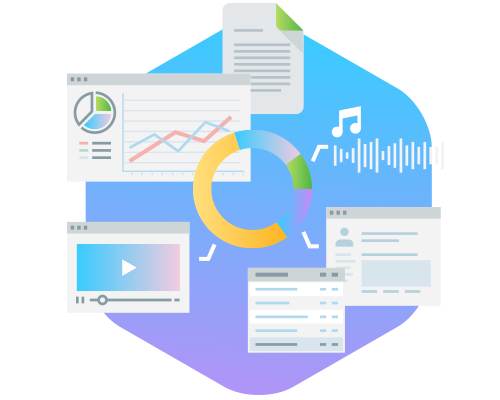Table of Contents
Enterprise SEO Strategy
Operating at scale isn’t easy and with more pages, and increased visibility comes along more issues. SEO can be challenging enough, and what you think would be a quick fix in some cases can take weeks to implement in an AGILE environment. When your pages and links numbers are in the thousands to hundreds of thousands or even millions, it’s a completely different strategy. This is where prioritization and impact matter the most since there are more internal stakeholders to satisfy and a chain of command to follow.
A successful SEO strategy for enterprise websites can dominate SERP results and maintain top rankings in the category and improves brand perception. However, the downfall of SEO at an enterprise level is that failures can have a substantial impact on traffic, rankings, revenue, and the brand. The impact of website’s performance affects the company’s bottom line and reputation. Then there are the levels of product management as well as project management which also includes collaboration between departments to maintain the site. When there are multiple teams, time and efficiency come into play and a level of automation is needed to perform tasks across thousands to millions of pages can speed up productivity.

Small To Mid Size Businesses
SEO Strategy For Businesses
- Taxonomy: Grouping pages into a logical, hierarchical structure, or taxonomy, can help improve the organization and navigation of the website, which can make it easier for search engines to understand the content on the site.
- Content creation: Creating high-quality, informative content that addresses the needs and concerns of the target audience can help establish the business as a thought leader in its industry, which can lead to increased trust and credibility among potential customers.
- Product development: Optimizing product pages for search engines can help improve the visibility and ranking of these pages in the search results, which can drive more targeted traffic to the website and lead to increased sales.
- Development: Implementing technical SEO best practices, such as optimizing title tags, meta descriptions, and header tags, can help improve the website’s overall performance in the search results and make it easier for search engines to crawl and index the site.

Website Traffic & Top Rankings
Are you tired of being stuck on page 10 of the search results? Want to see your website at the top of the list when people search for keywords related to your business? Look no further! I’ve got the perfect SEO strategy to help you climb the ranks and drive tons of traffic to your website.
First things first, let’s start with some keyword research. We want to identify the terms and phrases that your potential customers are using to search for products or services related to your business. By incorporating these keywords and phrases into your website’s content and meta tags in a natural and relevant way, we can help improve your visibility in the search results.
Next, it’s time to optimize those on-page elements. This means making sure that your title tags, meta descriptions, and header tags accurately reflect the content of your pages and include those targeted keywords and phrases. By doing this, we can help search engines understand what your pages are all about and improve your ranking in the search results.
But it’s not all about the technical stuff. We also want to create high-quality, informative content that addresses the needs and concerns of your target audience. This can help establish your business as a thought leader in your industry and increase trust and credibility among potential customers. Plus, it can give you an edge in the search results.
Let’s bring in some outside help with link building. Most enterprise websites have already established a large number of backlinks from other high-authority sites. However, for small sites that are still building their digital marketing strategy, by building high-quality backlinks from other reputable websites, we can show search engines that your website is worth paying attention to. It’s like getting a bunch of votes of confidence in the quality and relevance of your content.

Website Migration & SEO
Are you planning on migrating your website to a new CMS? Congratulations! This can be a great opportunity to give your website a fresh look and add new features and functionality. But before you get started, there’s one thing you don’t want to forget: SEO.
You see, SEO is all about making sure that your website is easy for search engines to understand and rank in the search results. And when you’re moving to a new CMS, there are a few key things you’ll want to consider to make sure you don’t lose any of that hard-earned search engine love.
First up, redirects. When you change the structure of your website, you’ll want to make sure that all of your old pages are redirecting to the new versions. This helps search engines understand that your content has moved and ensures that they don’t penalize you for having broken links.
Next, let’s talk about content. When you migrate to a new CMS, it’s important to make sure that all of your content is transferred over and properly formatted. This helps ensure that your website maintains its search engine rankings and doesn’t lose any traffic.
But it’s not just about the content you already have. You’ll also want to consider the content you’ll be adding in the future. Make sure that your new CMS has all the SEO-friendly features you need, like customizable title tags and meta descriptions, so you can continue to optimize your website for search engines.
Finally, don’t forget about your website traffic and rankings. As you migrate your website, it’s important to track your traffic and rankings to ensure that you’re not seeing any negative impacts. This can help you identify and fix any issues that may arise during the migration process.
In short, SEO is crucial when migrating a website to a new CMS. By considering redirects, content, website traffic, and rankings, you can ensure that your website continues to thrive in the search results.
Frequently Asked Questions
What are the 5 types of SEO?
- On-page SEO: This refers to the process of optimizing individual web pages in order to rank higher and earn more relevant traffic in search engines. On-page SEO includes optimizing the content and HTML source code of a page.
- Off-page SEO: This refers to the process of improving a website’s visibility through the use of external signals, such as backlinks from other websites and social media engagement.
- Technical SEO: This refers to the process of optimizing a website’s technical components in order to improve its visibility and ranking in search engine results pages. Technical SEO includes optimizing a website’s architecture, crawlability, and performance.
- Local SEO: This refers to the process of optimizing a website and online presence to rank higher in search engine results for specific localities. Local SEO involves optimizing a website’s content, structure, and online presence to be more relevant and visible to users searching for local businesses or services.
- Content SEO: This refers to the process of optimizing a website’s content in order to improve its visibility and ranking in search engine results pages. Content SEO involves creating high-quality, relevant, and informative content that addresses the needs and interests of the website’s target audience.
